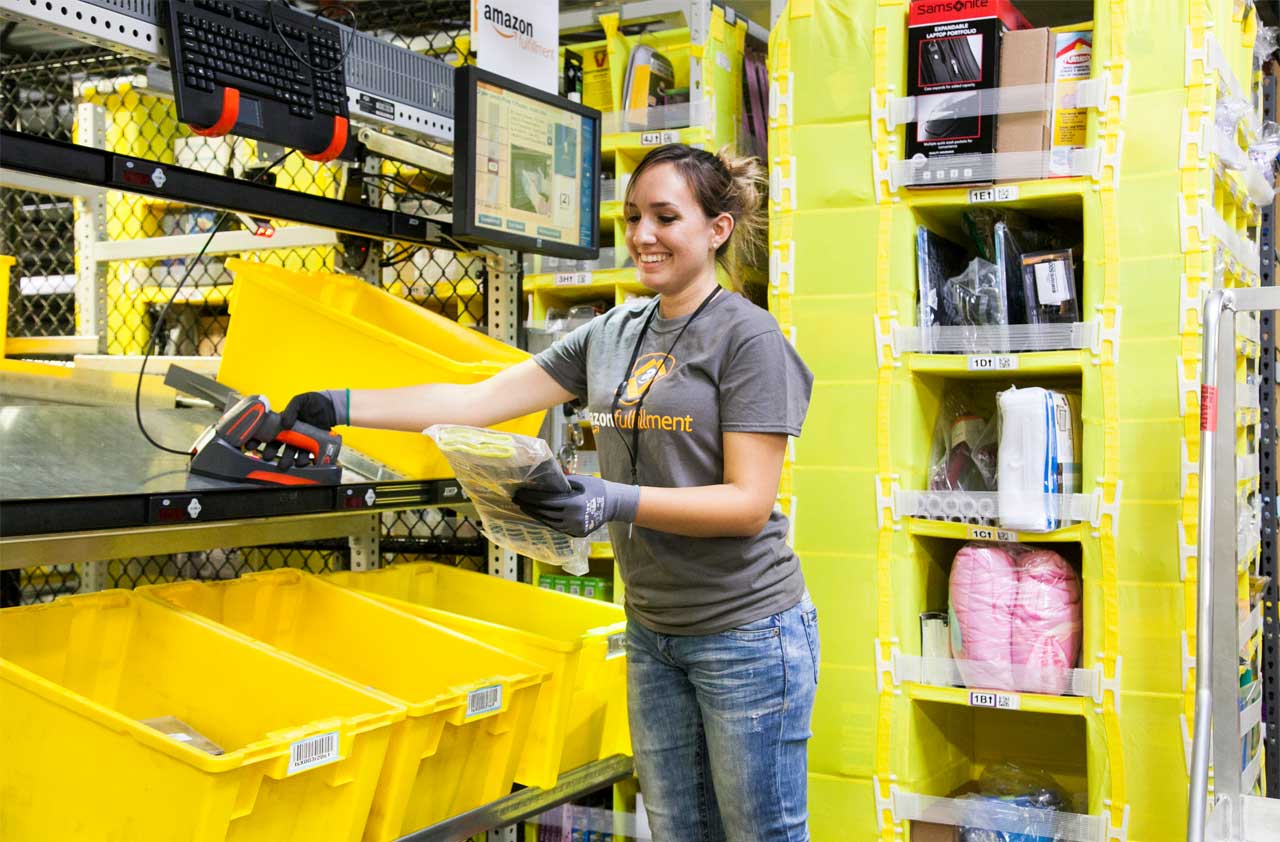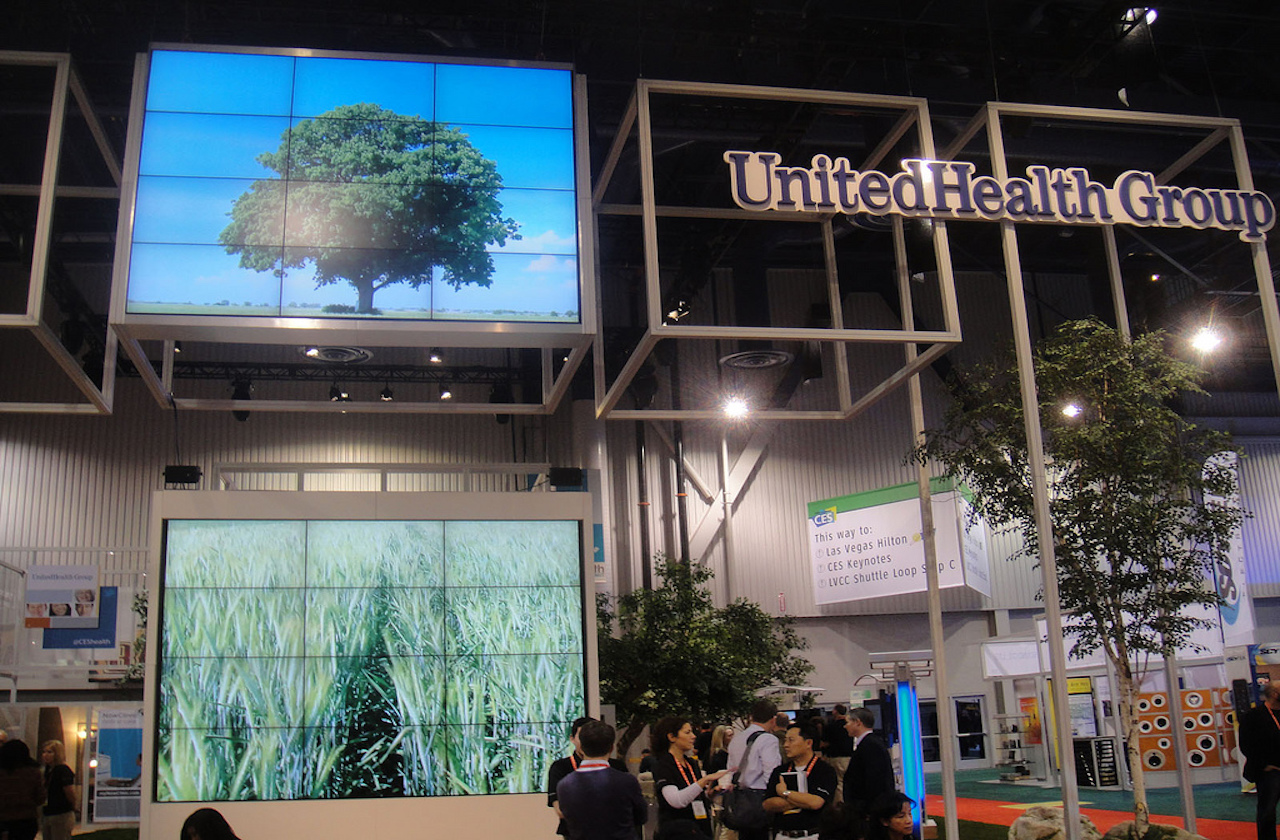6 Stocks to Buy and Hold Forever
Warren Buffett once said, “Our favorite holding period is forever.” Although “forever” may be an exaggeration (even for Buffett), it would certainly make investing simpler if you could buy good stocks and then mentally lock them away in your portfolio.


Warren Buffett once said, “Our favorite holding period is forever.” Although “forever” may be an exaggeration (even for Buffett), it would certainly make investing simpler if you could buy good stocks and then mentally lock them away in your portfolio. But not every stock is a keeper.
We went looking for financially healthy, well-managed companies with an ironclad lead in their industries and promising prospects for growth. These are the kind of winning businesses you can buy no matter what the overall market is doing, the ones that smart investors buy more of when prices dip.
Some of the firms on our list may surprise you; others are no-brainers. They aren’t stumble-proof. Every company has its weak spots. But we think these have enough potential for gains to overcome those risks. Although they look like good buys now, a bargain share price wasn’t our top priority. If the firm is a powerhouse and your commitment is long term, sometimes it’s okay to pay a premium. “Price is what you pay,” as Buffett also once said. “Value is what you get.”
Prices and other data, unless otherwise noted, are as of June 15. Earnings growth rates are annualized estimates for the next three- to five-year period. Stocks are listed alphabetically.

Accenture: Reinventing Consulting
- Market value: $110.0 billion
- Earnings growth rate: 10.0%
Your image of what a consulting firm does is probably outdated. Gone is the era when companies like Accenture (symbol ACN, $163) might have installed a new software system and called it a day. This year, the bulk of the firm’s revenue will come from customized and comprehensive digital, security and cloud-computing services. For example, Accenture’s digital tools help factories predict equipment failures. Its security division helps fortify firms in disparate industries—from drugmakers to oil-and-gas concerns to giant media companies—against hackers.
Accenture, based in Dublin, Ireland, is positioned in the fastest-growing pockets of the consulting business. Global spending on digital strategies is expected to increase by 22% per year through 2020. Accenture’s revenue from digital strategies grew at an even faster pace, 30%, in 2017. It has more than 6,000 patents and patent-pending applications in areas such as artificial intelligence, cybersecurity and drone technology. Accenture also spent $1.7 billion last year to acquire 37 companies—small acquisitions that augment its digital services worldwide.
Analysts expect annualized earnings growth of 10% over the next three years. Shares currently trade at 24 times expected earnings for the year ahead, compared with 17 for Standard & Poor’s 500-stock index. That’s higher than the stock’s normal premium to the index but shouldn’t deter long-term investors. Analyst David Grossman, with Stifel Financial, is bullish. “We view Accenture as a best-in-class company with a rare combination of solid growth prospects, a difficult-to-replicate business model and a defensive earnings stream,” he says.

Alphabet: Thriving on Change
- Market value: $805.2 billion
- Earnings growth rate: 17.2%
If thinking big is the secret to longevity, then Alphabet (GOOGL, $1,159), Google’s parent company, should be around for a long time. Firms that make do with small shifts can become irrelevant. “We will not shy away from high-risk, high-reward projects that we believe in, because they are the key to our long-term success,” says Alphabet’s 2017 annual report.
Such “moonshot” divisions include Waymo, Alphabet’s self-driving car initiative; Verily Life Sciences, which may one day find a way to assess a person’s risk for heart disease with an eye scan; and DeepMind, developing artificial intelligence that, among other things, is making the Google Assistant voice sound more human. Moonshot ventures accounted for just 1% of the Mountain View, Calif., firm’s total revenue last year, and they may take years to bear fruit. But the potential is big. Revenue from the projects soared 49% in 2017 compared with the previous year. That’s more than double the rate of growth of the rest of Alphabet’s business, which wasn’t shabby, either. Google revenue—roughly 86% of it from ad sales—climbed 23% year over year.
Critics say the firm’s dependence on advertising makes it sensitive to economic downturns. But with an 80% share, Alphabet dominates the online search market. Google’s various platforms, including Chrome, Gmail, Google Maps and YouTube, have more than 1 billion active users per month each. That level of traffic should cushion ad sales in bad times. Other worries include the potential for government regulation of web companies and slimmer profit margins as the cost of promoting Alphabet’s platforms rises.
All of that helps explain why the stock trades at a relatively reasonable 28 times estimated earnings for the year ahead. UBS analyst Eric Sheridan rates the stock a “buy” and says: “We see Alphabet as a large-cap internet leader that is surpassing revenue growth expectations today and building the foundation for the next three to five years.” Or longer.

Amazon.com: The E-Commerce Juggernaut
- Market value: $832.6 billion
- Earnings growth rate: 30.2%
- Amazon.com (AMZN, $1,716) has executives in an impressive array of industries quaking in their boots. Says Peter Bourbeau, a ClearBridge Investments fund manager who meets with dozens of companies throughout the year: “Whether it’s a mining company, an industrial equipment firm or a drugmaker, somehow the questions begin or end with the threat of Amazon.”
Expanding into new markets is the firm’s strategy. In recent months, Amazon acquired grocer Whole Foods; opened Amazon Go, a new kind of store with no checkout required, in Seattle; and launched Prime Wardrobe, a service that allows Amazon Prime members to try on new clothes before they buy them. Expect more ideas to bubble up. The firm spent $22.6 billion on research and development in 2017, more than any other company in the country.
Meanwhile, the Seattle-based firm’s older businesses are chugging along. The firm has more than 100 million Prime members, many of whom were attracted by Prime Video, the firm’s streaming-video business. Amazon’s North American e-commerce sales (60% of total revenue) grew 33% in 2017 from the previous year. Its cloud-computing business, Amazon Web Services (10% of sales), is growing even faster and fueling earnings growth overall thanks to its 25% operating profit margin. (The firm’s North American e-commerce business has a 3% margin; its international division has an operating loss.)
The stock’s stratospheric price-earnings ratio (121, based on estimated earnings for the next 12 months) reflects in part Amazon’s practice of plowing what might otherwise be counted as profit back into research and development. Even so, analysts on average expect Amazon to post earnings growth averaging better than 30% over each of the next three to five years, according to Zacks Investment Research. That’s triple what they expect in earnings growth for the S&P 500.

Ecolab: Cleaning Up
- Market value: $42.3 billion
- Earnings growth rate: 12.6%
- Ecolab (ECL, $147) isn't a household name because its products aren't made for home use. Hospitals, hotels, restaurants, schools and retailers use its cleaning fluids, equipment and services to do laundry, wash dishes and mop floors. It's not glamorous, but cleanliness is not a discretionary expense for Ecolab customers. “If these places are seen as not clean, they're out of business,” says Eric Schoenstein, a comanager of Jensen Quality Growth fund.
Ecolab is the biggest player in the commercial cleaning and sanitation industry. Although analysts say a severe or prolonged economic slowdown might hurt the St. Paul, Minn., firm, it has coped well in past downturns. In 2008, in the midst of the recession, Ecolab posted 12% revenue growth, and its stock held up better than the broad market. Over the long term, says Value Line analyst Michael Lavery, “we expect the company’s steady earnings growth to continue into early next decade and beyond.”
Ecolab also has a growing business in water treatment, pollution control and energy conservation that is marketed to textile companies, commercial factories and the oil-and-gas industry.
Analysts on average expect Ecolab earnings to increase by 15.1% in 2018 compared with 2017, and by another 10.6% in 2019. At $147 a share, the stock trades at 27 times estimated earnings for the next 12 months, in line with the P/E it has commanded over the past five years.

UnitedHealth Group: In the Pink
- Market value: $246.0 billion
- Earnings growth rate: 13.8%
- UnitedHealth Group (UNH, $256) is the biggest health insurer in the country, with some 50 million people on its rolls. That alone makes it compelling. But the Minnetonka, Minn.-based firm also provides a host of services to millions more through its Optum units, making the company a health care dynamo.
OptumRX offers prescription drug services to 65 million people, mostly through workplace plans. Through OptumHealth, 91 million people get access to specialized benefits, such as dental and vision care, as well as access to urgent-care clinics and walk-in surgical care centers that offer high-quality care at 50% to 75% of the price in a hospital setting. The third Optum division, OptumInsight, is “the most interesting piece of the firm over the long term,” says Jim Golan, a comanager of William Blair Large Cap Growth fund. The unit collects and analyzes years of health care treatment data, which is then used by hospitals, doctors, health plans, drug companies and governments to improve the efficiency of care and reduce costs.
United has built a unique business that Golan says can generate double-digit earnings growth in a strong or weak economy. Analysts predict annualized earnings growth of 13.8% over the next three to five years. Caveat: Mergers afoot within the health care sector, patterned after United’s business model, could prove challenging.
Trading at 20 times expected earnings for the year ahead, United’s shares are a bit pricey compared with those of other managed-care firms—but not enough to concern the bulls, given United’s leadership in a highly fragmented market, its wide geographic footprint and its product diversity.

Visa: The King of Plastic
- Market value: $311.7 billion
- Earnings growth rate: 17.2%
Chances are, you’re carrying less cash in your wallet today than you did a decade ago. Visa (V, $135), the leader in electronic payments processing, stands to benefit from the global shift to a cashless world. The Foster City, Calif., company clears more transactions than its three closest competitors combined, says Value Line analyst Sharif Abdou. In the first half of its fiscal year, which ends in September, transaction volume in the U.S. and Canada increased at a solid clip of more than 9%; volume in overseas developed and emerging regions climbed 7% to 8%. “Visa is poised for stellar results over the next several years,” says Abdou. Analysts expect an average 17.2% earnings growth rate over each of the next three to five years.
The potential wrench in the story is the rise of new payment platforms, such as ApplePay, Venmo and others. But many consumers still use their Visa card on these alternative systems. Digital currencies and the technology behind them could pose a threat, but not an immediate one, says Morningstar analyst Jim Sinegal. In the meantime, especially in the U.S., use of Visa credit and debit cards among consumers and merchants alike remains well entrenched, says Dan Davidowitz, a comanager at Polen Focus Growth fund.
Keep an eye out for dips, and buy with a long-term view. At $135 a share, the stock trades at 28 times estimated earnings for the year ahead. But patient investors should prosper as consumers the world over trade currency for plastic. “There’s still plenty of runway for growth,” says Davidowitz.

How to Spot a Keeper
Here’s what winning firms need in order to maintain a long-lasting edge over their peers.
- An in-demand product or service, or a well-known and trusted name. Whether it’s a sought-after product or service or even a popular store (online or on Main Street), a company that offers something in high demand creates a loyal group of repeat customers.
- A recurring stream of revenue. Habitual customers generate steady sales. The holy grail is a dependable flow of consistent income—say, from subscription-service contracts.
- Generous profits. Earnings drive stock prices, so look for a positive trend. Jensen Quality Growth comanager Eric Schoenstein zeroes in on a company’s return on equity, a profitability measure that tells him how well a company uses shareholder investments to generate earnings growth. He likes to see at least a 15% return on equity, by his calculation, in each of the past 10 years.
- The ability to raise or maintain prices even in a slump. An industry leader has pricing power even when the economy flags. Such a company may also have purchasing power—the ability to buy necessary materials to make its products at lower prices than its peers.
- Smart executives. You want managers who reinvest the company’s excess cash wisely with shareholders’ interests in mind. Look for executives who behave as the owner or founder of the business might—and who treat you like one, too—by making sound acquisitions or capital expenditures, buying back shares when prices are low, and boosting dividends.
- Hurdles that hinder the competition. Keeper companies erect “barriers to entry” that keep competitors at bay. Any prospective competitor to Amazon.com, for instance, would have to overcome the advantage of the Seattle-based firm’s vast distribution network. The e-commerce giant has 100-odd warehouses and more than 60 sorting centers and delivery stations worldwide.
- A promising road ahead. Like sharks that must keep swimming or die, companies have to keep growing. A keeper stock will have a catalyst to push earnings higher for several years. Look for companies that will benefit from a developing technology, for example, or a long-term trend, such as the aging population or the burgeoning middle class in the developing world.
Profit and prosper with the best of Kiplinger's advice on investing, taxes, retirement, personal finance and much more. Delivered daily. Enter your email in the box and click Sign Me Up.

Nellie joined Kiplinger in August 2011 after a seven-year stint in Hong Kong. There, she worked for the Wall Street Journal Asia, where as lifestyle editor, she launched and edited Scene Asia, an online guide to food, wine, entertainment and the arts in Asia. Prior to that, she was an editor at Weekend Journal, the Friday lifestyle section of the Wall Street Journal Asia. Kiplinger isn't Nellie's first foray into personal finance: She has also worked at SmartMoney (rising from fact-checker to senior writer), and she was a senior editor at Money.
-
 'The 'Mamdani Effect' in New York: Can the City Afford a Millionaire Tax?
'The 'Mamdani Effect' in New York: Can the City Afford a Millionaire Tax?State Tax Will higher income taxes drive the wealthy to flee New York in 2026?
-
 The November CPI Report Is Out. Here's What It Means for Rising Prices
The November CPI Report Is Out. Here's What It Means for Rising PricesThe November CPI report came in lighter than expected, but the delayed data give an incomplete picture of inflation, say economists.
-
 Online Banks Still Lead on Rates, But Is Switching Worth it Now?
Online Banks Still Lead on Rates, But Is Switching Worth it Now?As interest rates trend down, online banks keep an edge on yields, but service, access and flexibility still matter. Here’s how the trade-offs stack up.
-
 The 24 Cheapest Places To Retire in the US
The 24 Cheapest Places To Retire in the USWhen you're trying to balance a fixed income with an enjoyable retirement, the cost of living is a crucial factor to consider. Is your city the best?
-
 Tech Stock Dividends Worth Checking Out
Tech Stock Dividends Worth Checking OutTech stock dividends are increasingly becoming part of the sector's growth story. Here's what investors should be looking for.
-
 What Is AI Investing?
What Is AI Investing?Curious about the AI investing boom? Let's take a look at what exactly AI is and how you can invest in a potential trillion-dollar megatrend.
-
 5 Stocks to Sell or Avoid Now
5 Stocks to Sell or Avoid Nowstocks to sell In a difficult market like this, weak positions can get even weaker. Wall Street analysts believe these five stocks should be near the front of your sell list.
-
 Best Stocks for Rising Interest Rates
Best Stocks for Rising Interest Ratesstocks The Federal Reserve has been aggressive in its rate hiking, and there's a chance it's not done yet. Here are eight of the best stocks for rising interest rates.
-
 The Five Safest Vanguard Funds to Own in a Volatile Market
The Five Safest Vanguard Funds to Own in a Volatile Marketrecession The safest Vanguard funds can help prepare investors for market tumult but without high fees.
-
 The 5 Best Inflation-Proof Stocks
The 5 Best Inflation-Proof Stocksstocks Higher prices have been a major headache for investors, but these best inflation-proof stocks could help ease the impact.
-
 5 of the Best Preferred Stock ETFs for High and Stable Dividends
5 of the Best Preferred Stock ETFs for High and Stable DividendsETFs The best preferred stock ETFs allow you to reduce your risk by investing in baskets of preferred stocks.
